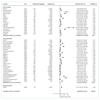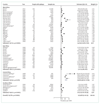Epidemiology, causes, and treatment of epilepsy in sub-Saharan Africa
- PMID: 25231525
- PMCID: PMC5497080
- DOI: 10.1016/S1474-4422(14)70114-0
Epidemiology, causes, and treatment of epilepsy in sub-Saharan Africa
Abstract
Epilepsy is a common neurological disease in tropical countries, particularly in sub-Saharan Africa. Previous work on epilepsy in sub-Saharan Africa has shown that many cases are severe, partly a result of some specific causes, that it carries a stigma, and that it is not adequately treated in many cases. Many studies on the epidemiology, aetiology, and management of epilepsy in sub-Saharan Africa have been reported in the past 10 years. The prevalence estimated from door-to-door studies is almost double that in Asia, Europe, and North America. The most commonly implicated risk factors are birth trauma, CNS infections, and traumatic brain injury. About 60% of patients with epilepsy receive no antiepileptic treatment, largely for economic and social reasons. Further epidemiological studies should be a priority to improve understanding of possible risk factors and thereby the prevention of epilepsy in Africa, and action should be taken to improve access to treatment.
Copyright © 2014 Elsevier Ltd. All rights reserved.
Conflict of interest statement
We declare no competing interests.
Figures




References
-
- Fisher RS, van Emde Boas W, Blume W, et al. Epileptic seizures and epilepsy: definitions proposed by the International League Against Epilepsy (ILAE) and the International Bureau for Epilepsy (IBE) Epilepsia. 2005;46:470–72. - PubMed
-
- Commission on Epidemiology and Prognosis, International League Against Epilepsy. Guidelines for Epidemiologic Studies on Epilepsy. Epilepsia. 1993;34:592–96. - PubMed
-
- Preux P-M, Druet-Cabanac M. Epidemiology and aetiology of epilepsy in sub-Saharan Africa. Lancet Neurol. 2005;4:21–31. - PubMed
-
- Mushi D, Hunter E, Mtuya C, Mshana G, Aris E, Walker R. Social-cultural aspects of epilepsy in Kilimanjaro Region, Tanzania: Knowledge and experience among patients and carers. Epilepsy Behav. 2011;20:338–3. - PubMed
Publication types
MeSH terms
Substances
Grants and funding
LinkOut - more resources
Full Text Sources
Other Literature Sources
Medical
Miscellaneous

